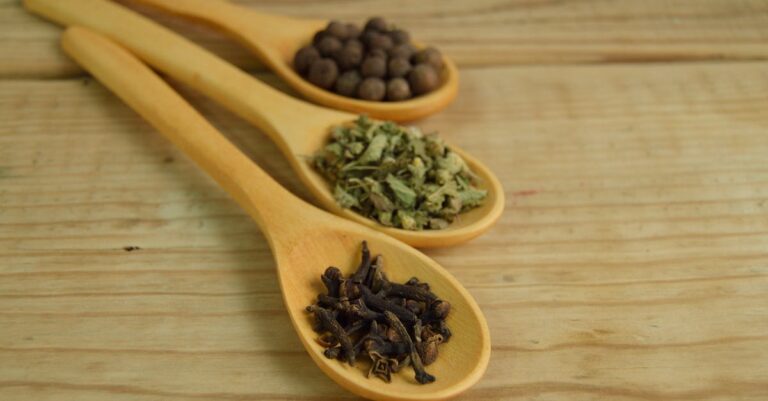Introduction
What is Xanax?
Xanax, also known as alprazolam, is a medication that belongs to the benzodiazepine class. It is commonly prescribed for the treatment of anxiety disorders and panic attacks. Xanax works by enhancing the effects of a natural chemical in the body called gamma-aminobutyric acid (GABA), which helps to calm the nervous system. This medication is often used as a short-term solution to manage symptoms of anxiety. However, it is important to note that Xanax can be habit-forming and should be used under the guidance of a healthcare professional. If you are considering heavy metal detoxification, it is important to consult with your doctor before making any changes to your medication regimen. They can provide guidance on the best approach to detoxification and ensure your safety throughout the process.
History of Xanax
Xanax, also known by its generic name alprazolam, is a medication that belongs to a class of drugs called benzodiazepines. It is primarily used to treat anxiety disorders and panic attacks. Xanax works by enhancing the effects of a neurotransmitter called gamma-aminobutyric acid (GABA) in the brain, which helps to reduce anxiety and promote relaxation. The history of Xanax dates back to the 1960s when it was first synthesized by a pharmaceutical company. Since then, it has become one of the most prescribed medications for anxiety. In recent years, there has been an increased focus on natural detox remedies, which aim to help individuals overcome addiction without the use of medication. While these remedies may have some benefits, it is important to consult with a healthcare professional before attempting any detoxification process.
Why is Xanax called something else now?
Xanax, a popular anti-anxiety medication, is now called something else due to a recent rebranding effort. The new name reflects a shift in the understanding and treatment of anxiety disorders. The decision to change the name was driven by the desire to reduce the stigma associated with Xanax and promote a more positive and holistic approach to mental health. The new name also aligns with the growing trend of using natural remedies and therapies for anxiety management. This rebranding highlights the importance of exploring alternative options, such as natural mercury detox, in addition to pharmaceutical interventions. By embracing a broader perspective on anxiety treatment, individuals can make informed choices that prioritize their overall well-being.
New Name for Xanax

Reasons for the name change
The name change for Xanax has been driven by several reasons. One of the main factors is the increasing awareness of the potential risks and side effects associated with the medication. Another significant reason is the growing concern over the misuse and abuse of Xanax, particularly among younger populations. Additionally, the pharmaceutical industry has been making efforts to rebrand the medication to better reflect its intended use and to differentiate it from other drugs in the same class. As a result, Xanax is now known by a different name, which aims to emphasize its therapeutic benefits while also addressing the potential dangers. This name change is part of a broader initiative to promote safer and more responsible use of the medication, while also ensuring that individuals who genuinely need it can still access it.
The new name of Xanax
Xanax, a popular anti-anxiety medication, is now known by a different name. The new name of Xanax is not yet widely recognized, but it is gaining traction in the medical community. This change in name is part of a broader effort to rebrand and reposition the medication. While the exact reasons for the name change are not publicly known, it is speculated that it may be related to patent expiration or marketing strategies. Regardless of the name, the medication continues to be prescribed to patients who suffer from anxiety and panic disorders. It is important to note that Xanax, or its new name, should only be taken under the guidance of a healthcare professional, as it can have serious side effects and can be habit-forming.
Public reaction to the new name
The public reaction to the new name of Xanax has been mixed. While some individuals have embraced the change, others have expressed concerns and skepticism. The renaming of Xanax has sparked discussions and debates among medical professionals, mental health advocates, and the general public. Many people are curious about the reasons behind the name change and how it will impact the perception and use of the medication. Some individuals have highlighted the importance of clear communication and education regarding the new name to ensure that patients and healthcare providers are well-informed. BoldKeywords
Effects and Uses of Xanax

Medical uses of Xanax
Xanax, also known by its generic name alprazolam, is a medication commonly prescribed for the treatment of anxiety disorders and panic attacks. It belongs to a class of drugs called benzodiazepines, which work by enhancing the effects of a neurotransmitter called gamma-aminobutyric acid (GABA) in the brain. Xanax is known for its fast-acting and calming effects, making it a popular choice for individuals experiencing acute anxiety or panic symptoms. However, it is important to be aware of the potential side effects of Xanax. Some common side effects include drowsiness, dizziness, and confusion. It is also possible to develop a dependence or addiction to Xanax with prolonged use. Therefore, it is important to use Xanax under the guidance of a healthcare professional and to carefully monitor its effects.
Side effects of Xanax
Xanax is a medication that is commonly prescribed to treat anxiety and panic disorders. While it can be effective in managing these conditions, it is important to be aware of the potential side effects. Some common side effects of Xanax include drowsiness, dizziness, and confusion. In rare cases, more serious side effects such as allergic reactions or difficulty breathing may occur. It is also worth noting that Xanax can be habit-forming and should be taken as prescribed by a healthcare professional. If you experience any concerning side effects while taking Xanax, it is important to seek medical attention. The mercury detox program is a treatment option that can help individuals eliminate mercury from their bodies. This program involves various methods, such as chelation therapy and dietary changes, to remove mercury and improve overall health. By participating in a mercury detox program, individuals may experience improved energy levels, reduced symptoms associated with mercury toxicity, and enhanced overall well-being.
Addictive properties of Xanax
Xanax is a medication commonly used to treat anxiety disorders. It belongs to a class of drugs known as benzodiazepines, which work by enhancing the effects of a neurotransmitter called gamma-aminobutyric acid (GABA) in the brain. Xanax is known for its fast-acting and potent effects, making it an effective short-term solution for managing anxiety symptoms. However, it is important to be aware of the addictive properties of Xanax. When taken for an extended period or in higher doses than prescribed, Xanax can lead to dependence and addiction. It is crucial to approach anxiety treatment with a holistic mindset, considering alternative therapies and lifestyle changes that can complement medication use. Taking a holistic approach to anxiety can involve practices such as mindfulness, exercise, therapy, and stress management techniques. By incorporating these strategies alongside medication, individuals can achieve a more comprehensive and sustainable approach to managing their anxiety.
Regulation and Legal Status

Regulatory measures for Xanax
Regulatory measures for Xanax include strict control and monitoring of its distribution and use. Xanax, also known by its generic name alprazolam, is classified as a Schedule IV controlled substance by the Drug Enforcement Administration (DEA) in the United States. This means that it has a low potential for abuse and dependence compared to other drugs in higher schedules. However, due to its sedative and calming effects, Xanax is still subject to regulations to prevent misuse and ensure patient safety. Healthcare professionals and pharmacies must adhere to prescribing guidelines, including monitoring the quantity and frequency of prescriptions. Additionally, Xanax is not available over-the-counter and requires a valid prescription from a licensed healthcare provider. These regulatory measures aim to mitigate the risks associated with Xanax use and promote responsible use of the medication.
Controlled substance classification
Xanax, also known as alprazolam, is a medication that belongs to the benzodiazepine class of drugs. It is primarily used to treat anxiety disorders and panic attacks. Xanax works by enhancing the effects of a neurotransmitter called gamma-aminobutyric acid (GABA) in the brain, which helps to reduce anxiety and promote relaxation. Due to its potential for abuse and addiction, Xanax is classified as a controlled substance by the Drug Enforcement Administration (DEA). This means that it is regulated and its use is restricted to medical purposes only. It is important to follow the prescribed dosage and duration of use to avoid dependence and withdrawal symptoms. If you have any concerns about Xanax or its use, it is best to consult with a healthcare professional.
Legal consequences of Xanax misuse
Xanax misuse can have serious legal consequences. It is important to understand the potential legal ramifications of using Xanax without a prescription or in ways not prescribed by a healthcare professional. Possessing Xanax without a valid prescription is illegal and can result in criminal charges. Distributing or selling Xanax without proper authorization is also a criminal offense. Additionally, driving under the influence of Xanax is against the law and can lead to charges of driving under the influence (DUI). It is crucial to be aware of the legal risks associated with Xanax misuse to avoid facing legal penalties.
Alternatives to Xanax

Non-pharmaceutical alternatives
There are several non-pharmaceutical alternatives to Xanax that individuals can consider. These alternatives can be beneficial for those who prefer natural remedies or are looking for alternative options to manage anxiety. Some of the commonly recommended alternatives include cognitive-behavioral therapy (CBT), relaxation techniques such as deep breathing exercises and meditation, regular exercise, and herbal supplements like valerian root and chamomile. It is important to note that while these alternatives may be effective for some individuals, they may not work for everyone. It is always recommended to consult with a healthcare professional before trying any new treatment approach.
Other medications for anxiety
Xanax, a medication commonly used to treat anxiety disorders, is known by various names in different countries. In the United States, it is marketed under the brand name Xanax, while in the United Kingdom, it is commonly referred to as Alprazolam. Other countries may have their own brand names for the medication. Xanax belongs to a class of drugs called benzodiazepines, which work by enhancing the effects of a neurotransmitter called gamma-aminobutyric acid (GABA) in the brain. This helps to reduce anxiety and promote relaxation. It is important to note that Xanax should only be used under the guidance of a healthcare professional, as it can be habit-forming and may cause side effects. If you are experiencing anxiety symptoms, it is recommended to consult with a healthcare provider to determine the most appropriate treatment option for you.
Therapies and lifestyle changes
There are various therapies and lifestyle changes that can be beneficial for managing anxiety and related conditions. Cognitive-behavioral therapy (CBT) is a widely used approach that helps individuals identify and modify negative thought patterns and behaviors. This therapy can be effective in teaching individuals coping skills and techniques to manage their anxiety symptoms. Other forms of therapy, such as dialectical behavior therapy (DBT) and acceptance and commitment therapy (ACT), can also be helpful in addressing anxiety. Additionally, incorporating lifestyle changes such as regular exercise, healthy eating, and stress management techniques can contribute to overall well-being and reduce anxiety levels. It is important to consult with a healthcare professional to determine the most suitable therapies and lifestyle changes for individual needs.
FAQ (Frequently Asked Questions)

What are the common side effects of Xanax?
Xanax is a commonly prescribed medication for the treatment of anxiety and panic disorders. However, like any medication, it can have side effects. It is important to be aware of the common side effects of Xanax. One of the potential side effects of Xanax is hormone replacement therapy. Hormone replacement therapy can be an effective treatment option for individuals experiencing hormonal imbalances. It involves replacing hormones that the body no longer produces in sufficient quantities. However, hormone replacement therapy can also have its own set of side effects. It is important to discuss the potential risks and benefits of hormone replacement therapy with a healthcare professional before starting treatment.
Can Xanax be used for long-term treatment?
Xanax, also known by its generic name alprazolam, is a medication commonly prescribed for the treatment of anxiety and panic disorders. However, it is not recommended for long-term use due to its potential for dependence and addiction. It is important to be aware of the warning signs of a damaged liver, as prolonged use of Xanax can lead to liver damage. If you experience symptoms such as yellowing of the skin or eyes, dark urine, or abdominal pain, it is crucial to seek medical attention immediately. Taking Xanax as prescribed and under the guidance of a healthcare professional can help minimize the risks associated with long-term use.
Is Xanax safe to use during pregnancy?
Xanax is a commonly prescribed medication for anxiety and panic disorders. However, when it comes to using Xanax during pregnancy, there are concerns about its safety. Many studies have shown that taking Xanax during pregnancy can increase the risk of birth defects and other complications. It is important for pregnant women to consult with their healthcare provider before using Xanax or any other medication. In the meantime, there are natural remedies for menopause that can help manage anxiety and stress without the potential risks associated with Xanax.






















































